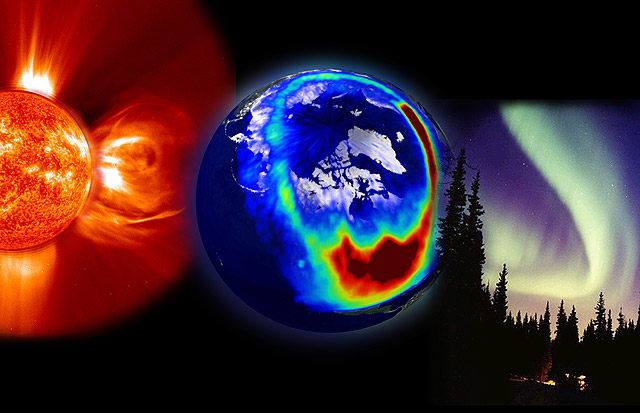National Aeronautics and Space Administration
Goddard Space Flight Center

Sun-Earth Day 2010: Magnetic Storms
IMAGE GALLERY

- SOHO composite image
This composite image presents the three most visible elements of space weather: a storm from the Sun, aurora as seen from space, and aurora as seen from the Earth. The solar storm is a corona mass ejection (CME) composite from EIT 304Å superimposed on a LASCO C2 image, both from SOHO. The middle image from Polarís VIS imager shows charged particles as they spread down across the U.S. during a large solar storm event on July 14, 2000. Lastly, Jan Curtis took this image of an aurora display in Alaska, the visible evidence of space weather that we see here on Earth.
NASA Fact
The most powerful solar flare in the last 500 years occurred on September 2, 1859 and was sighted by two astronomers who happened to be looking at the sun at exactly the right time!
